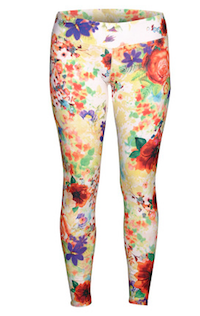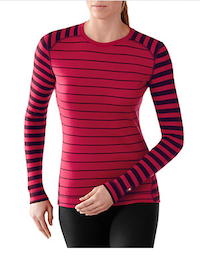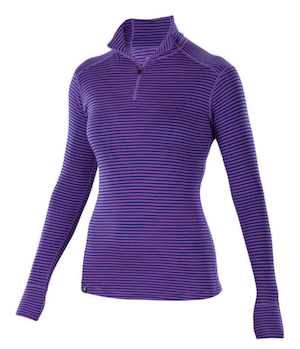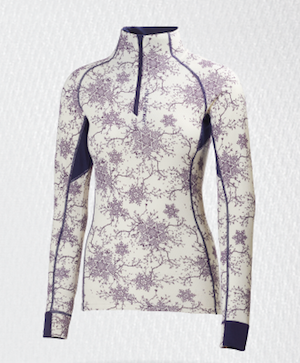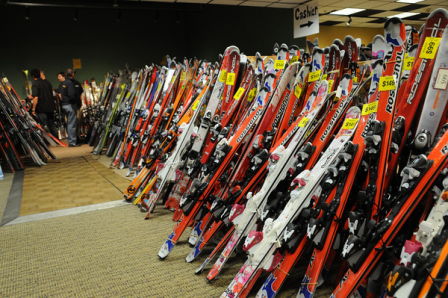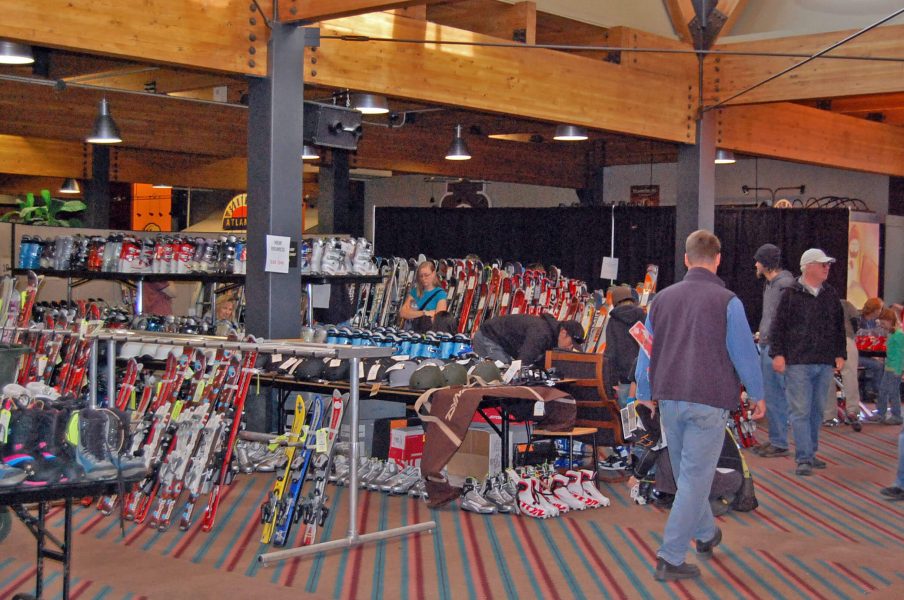I hate the cold.
I know — for a skier, that’s practically blasphemous. But it’s true. Well, let me put it another way: I don’t like being cold. So there is a difference.
That’s where baselayers come in. True to their name, baselayers are the foundation for staying warm. And the warmer I am, the longer I can ski. So to me, baselayers are very, very important.
 Years ago, baselayers were pretty simple. We called them long johns, they were typically cotton, and you really didn’t give them that much thought. But things are different now. There are lots of options available, and it can all get pretty confusing. So let me try to help.
Years ago, baselayers were pretty simple. We called them long johns, they were typically cotton, and you really didn’t give them that much thought. But things are different now. There are lots of options available, and it can all get pretty confusing. So let me try to help.
Material Facts
Baselayers come in a lot of different materials, but no matter which one you choose, your objective should be the same: you want something that’s comfortable, easy to move around in, and able to keep you dry by wicking, or transporting, moisture away from your body.
Some of the major players are:
Cotton: You know those long johns I mentioned before? Cotton. With all the other options available, this is something you should be sure to avoid. Never, ever wear cotton as a baselayer. Never. The reason is simple: When cotton gets wet, it stays wet. And when you’re wet, you’re colder. So resist the urge to wear that T-shirt next to your skin. Choose one of the materials below.
Silk: Another oldie but a goodie, silk is a longtime baselayer staple valued for its smooth feel, light weight, and ability to be worn without adding bulk. Some of today’s silk baselayers have been treated to enhance wicking, something conventional silk layers don’t do. On the downside: silk baselayers require hand washing, which can be a bit of a PITA.
Merino wool: Wool used to be big, then it wasn’t, now it is again. Part of the problem was its bad rep. Wool just sounds itchy. That may be because you’re thinking of plain old sheep’s wool. This is baaaaaaaa-d (pardon the pun). Merino wool isn’t like that at all. Its final finish is much smoother than standard sheep’s wool. It’s also soft and has a high warmth-to-weight ratio. And it’s naturally antibacterial, usually for the life of the garment, so it can be worn on consecutive days with minimal odor buildup. Some of the great choices for merino wool include Smartwool, Icebreaker, and Ibex, though other companies offer wool layers, as well.
Synthetics: These are typically less expensive than wool, dry more quickly, and retain their shape better. And while synthetics have a nasty reputation for retaining odors, many companies have come up with technologies that minimize the stink factor. There are loads of companies offering synthetic baselayers, each with its little twist. Columbia Sportswear, for example, makes baselayers that incorporate its Omni-Tech technology. These are little silver dots on the inside of a garment that they claim reflects and retain the warmth your body generates. [Full disclosure: I’m a member of the Columbia #omniten team, and they send me a lot of cool stuff].
Patagonia has its popular Capilene series, available in a variety of weights. And Hot Chillys, who recently sent me some of their Micro-Elite layers, combines micro polyester yarns with spandex for a close body fit and full range of motion, then gives it a treatment to prevent odors. Some companies, such as CW-X and Opedix, offer compression-type baselayers, which promise to provide extra support to reduce muscle fatigue. But these are only some of the players out there: UnderArmour, Mountain Hardwear, Arc’tyrex, Obermeyer, Marmot, TheNorthFace — really, just about every ski apparel company has a baselayer line. Yes, it can be dizzying.
A Word on Weights
You can get baselayers in a variety of weights: Lightweight, midweight, and heavy. As a rule, the thinner the fabric, the better it wicks and the faster it dries. If it’s not very cold, or if you’re going to be very active, you’ll want to stick with a lighter weight. Colder, or less active, go heavier. And if it’s really cold, don’t hesitate to wear two or even three layers at once. You can always take one off if you get too warm. It may take some experimentation to nail down the best combination for your activity, and once you do, trust me, you’ll forget by next season.
Also, in order for a baselayer to wick properly, the fabric needs to lay against the skin so it can pick up moisture. So make sure the fit is relatively snug.
Color is the New Black
Open up my baselayer drawer, and you’ll see a whole lot of black. Black has its benefits. It goes with everything, and you can get it from just about any company. Hot Chillys recently sent me one of their Micro-Elite tops, and yes, it’s black, but it’s really nice. Soft and fleecy on the inside, nice and smooth on the outside, with enough stretch to allow full range of motion. A nice weight, too. Honestly, I figure since baselayers go under things, it doesn’t much matter if it’s black or not.
Nonetheless, black can be boring. So some companies are offering baselayers in a variety of colors and patterns. Here are a few of the many that are out there.
From Hot Chillys:
On the wool side, take a look at this from Smartwool:
Or this, from Ibex:
Or from Helly Hansen:
A lot to think about, yes?
Bottom line: The baselayer you choose is a matter of personal preference. Select one that keeps you warm, dry, and comfortable, fits within your budget, and works with your activity, and you’re set.


